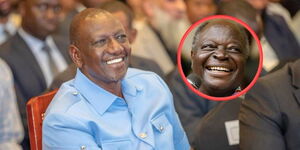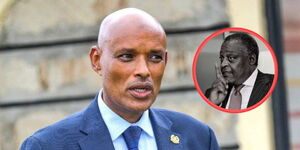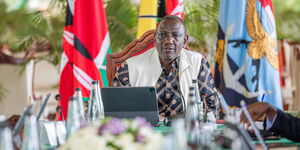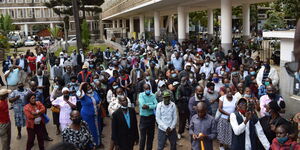The Kenya Wildlife Service (KWS) has issued a statement following the circulation of a message claiming park fees at various national parks will be increased to a flat rate of 100 USD (about Ksh13,000), effective July 1, 2025.
In a statement on Thursday, April 24, the KWS dismissed the circular, clarifying that no charges had been approved or communicated through the service's official channels.
“We are aware of a misleading message circulating on social media regarding an alleged increase in Kenya Wildlife Service (KWS) conservation fees, purportedly effective from 1st July 2025,” KWS said in their statement, adding, "We wish to reassure the public that this information is false.”
In the communique that has been circulating online, it was purported that high-season entry fees would apply to select parks, including the Nairobi National Park, Tsavo East and Tsavo West.
The quoted prices, as per the fake document, were hiked to as high as Ksh13,000 (100 US dollars) per person per day.
In the false communique, Sheldrick Orphanage and Lake Nakuru National Park were also listed as sites affected by the rates, which were purported to rise from Ksh6,700 (USD 52) and Ksh7,700 (USD 60 dollars) to a flat rate of Ksh13,000 (USD 100) per day.
The fake message sparked confusion and panic, particularly because it lacked proper branding from the KWS, and vaguely mentioned the undertaking of "next steps" which included looking into amending policies without any credible source.
But the KWS reiterated that changes to park entry fees must be made through a transparent and participatory process involving different stakeholders. Part of the process includes a public participation exercise, as required by the law.
KWS concluded with the KWS urging members of the public to always refer to their official channels, including those on social media, to avoid falling victim to misinformation.
The issue of fake circulars concerning government agencies has been on the rise in recent weeks, with unscrupulous individuals preying on online users to solicit money. However, these online frauds usually have glaring red flags, making it fairly easy to spot falsified government documents.
One of the most obvious indicators of a fake posting is the presence of grammatical errors within the memo or advertisement. Typically, official statements from state agencies undergo rigorous vetting across various departments, making errors highly unlikely. Memos with glaring mistakes are, therefore, most likely to originate from unreliable sources.
Another key indicator is the use of unofficial language in the text, especially in matters involving the state.
Memos and circulars that are rigged with informal lingo are more likely to be fake since the state announcements take a specific language that is likely to appeal to everyone.












